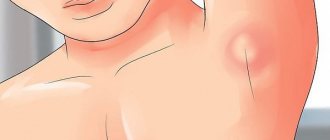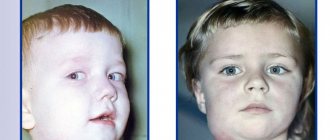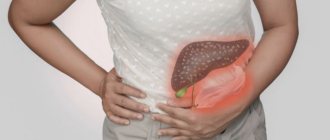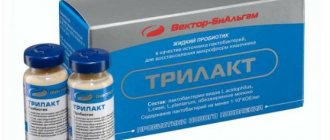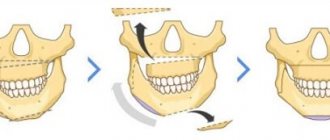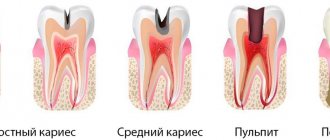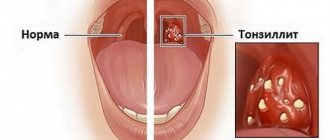In the jaw lymph nodes, the lymph circulating in the cells and capillaries of the oral cavity and head area is processed. Submandibular lymphadenitis is a polyetiological disease: its development can be caused by both chronic diseases and infections in the acute stage. The disease requires mandatory treatment from a specialist, It is impossible to cure lymphadenitis on your own
.
What is submandibular lymphadenitis, stages of development
Submandibular lymphadenitis is inflammation of the cervical and submandibular lymph nodes
, which can be acute or chronic. Often the disease is secondary, that is, it does not occur independently, but as a symptom of a primary infection.
Acute stage
In the acute form of the disease, one lymph node or several may become inflamed. Depending on what kind of exudate is contained in the inflamed node - pus or serous fluid - lymphadenitis is divided into purulent and non-purulent. The acute form of the disease is treated by removing pus from the lymph node and eliminating the root cause of inflammation.
If there is pus inside the lymph node, there is a danger of it breaking through and infecting surrounding tissues.
Chronic stage
The transition of the disease to the chronic phase is a consequence of the lack of adequate treatment. The node no longer increases in size and hardens. The pain syndrome intensifies, and severe intoxication of the body occurs. The skin around the node becomes purple.
Compared to the acute phase of the disease, with chronic lymphadenitis there is a clearly noticeable increase in the area of inflamed tissue around the lymph node
. The danger of this form of pathology is that it may require removal of the lymph node.
Basic treatment methods and contraindications
Treatment is carried out using an integrated approach and conservative methods of therapy.
The following medications are prescribed:
- antibiotics of narrow or broad spectrum of action;
- probiotics - to preserve intestinal microflora;
- antihistamines - to prevent allergic reactions and reduce tissue swelling.
Physiotherapeutic methods are represented by UHF and EHF therapy, which has an anti-inflammatory and antiseptic effect.
Severe infections may require surgery.
Contraindications:
- suspicion of the presence of a tumor formation;
- Do not apply warm compresses or heat areas of swelling.
Causes of submandibular lymphadenitis
Inflammation of the cervical and jaw lymph nodes is associated primarily with diseases of the oral cavity and respiratory system.
The main causes of submandibular lymphadenitis are:
- An acute respiratory infection of viral or bacterial origin without a characteristic localization.
- Dental diseases. Especially often, the cause of the inflammatory process in the submandibular lymph nodes is advanced caries or one of its complications: pulpitis, periodontitis, gingivitis, periodontitis, periodontal disease.
- A history of throat diseases: tonsillitis, chronic sore throat, pharyngitis, adenoiditis.
- Acute otitis.
- Chronic or acute inflammation of the nasal sinuses: frontal sinusitis, sinusitis, sinusitis.
- Mechanical damage to the submandibular lymph node caused by trauma.
- The presence in the body of foci of chronic inflammation, characteristic of rheumatoid arthritis, STDs, HIV.
- Infection of the body with Koch's bacillus. The presence of a microorganism does not necessarily entail the development of a tuberculosis process, so the patient may not be aware of the infection. But even in a depressed state, Koch's wand can affect the lymph nodes.
Symptoms, photos and diagnosis of submandibular lymphadenitis
Submandibular lymphadenitis can be distinguished from the usual enlarged lymph nodes, which occurs with reduced immunity, by the presence of pain and compaction. If there is no pain when you touch the node and the lump is not palpable, its enlargement may be caused by decreased immunity. A compacted lymph node can signal the development of oncology, so if it is detected, it is necessary to urgently be examined by a doctor.
Submandibular lymphadenitis is characterized by enlarged lymph nodes, but it is not the main symptom. For a doctor to suspect lymphadenitis, at least one of the following signs must appear:
- Pain syndrome. In the early stages of the development of the disease, aching, nagging pain of high intensity is noted in the lower part of the head - under the lower jaw. Severe pain is felt when lightly pressing on the lymph node, during chewing, when yawning, or turning the head. As the disease progresses, pain during palpation increases, and then at rest. Patients are unable to relieve pain on their own.
- Significant enlargement of the lymph node and severe swelling, which makes swallowing difficult and provokes a feeling of fullness in the sublingual area. When swallowing, there is a feeling that a piece of food is too large. Speech becomes difficult.
- Labored breathing. It occurs gradually and is accompanied by cyanosis of the nasolabial triangle and pallor of the skin of the face.
- Visually noticeable swelling under the cheek. The size of the compaction depends on the severity of the ongoing pathological process, the amount of serous fluid and pus.
- An increase in body temperature to 39–40 °C, which may be accompanied by severe headache and sweating. This temperature is difficult to reduce with conventional antipyretics.
- Redness of the skin above and around the node. If pus has accumulated in the node, the skin around it will acquire a pronounced purple tint.
An accumulation of pus can be detected by palpation; pus can be felt even through the texture of the skin and node.
If there are signs of inflammation of the submandibular lymph node, you should seek help from a doctor. The treatment of lymphadenitis is carried out by therapists, otolaryngologists and surgeons.
Photo: chronic inflammation of the lymph node
Photo: acute inflammation of the lymph node
In addition to visual inspection and palpation of the node, doctors use several other clinical diagnostic methods:
- General blood analysis. With the development of submandibular lymphadenitis, there is a significant increase in the level of leukocytes in the blood.
- Ultrasonography. Allows you to detect the presence of pus and serous fluid inside the lymph node.
- Bacteriological analysis of fluid from a lymph node. Allows you to determine the type of bacteria that caused the inflammation and select the most effective antibiotics.
- Carrying out a complete differential (excluding other diseases) diagnosis. It is necessary due to the similarity of the symptoms of submandibular lymphadenitis with other diseases: inflammation of the salivary glands, adenoiditis.
To prescribe the correct treatment, it is necessary to identify the form of the disease and determine the severity of the pathological process.
Signs of inflammation of the submandibular lymph nodes
How the disorder manifests itself depends on how far the disease process has progressed. If you do not carry out the necessary therapeutic measures, one stage will quickly pass into another.
First stage
The size of the lymph nodes changes very slightly, but the person already feels that they hurt when pressed. Discomfort occurs when turning the head. Body temperature often rises and a sore throat appears. A tickle or dry, unproductive cough is annoying. Pain occurs only on one side of the neck or on both sides at once. The first case is more likely if it is a viral disease.
Second stage
It is called “acute lymphadenitis”. Now the lymph node can be distinguished visually - it becomes convex and protrudes forward. Externally it resembles a subcutaneous ball. Its diameter reaches three centimeters, but can be more impressive.
The node is painful to the touch. Because of this, it is difficult for the patient to turn and tilt his head, and open his mouth wide. The mobility of the upper and lower jaw is significantly limited.
The pain may radiate to the cheek or ear. Body temperature increases. Overall performance decreases.
Third stage
Called purulent lymphadenitis. Here, the inflammatory process even affects structures adjacent to the lymph node. The patient complains of pain in the throat, collarbone, armpit, and head. The nerve endings of the teeth may become inflamed. Then acute toothache occurs.
Pus formed in lymphoid tissues consists mainly of necrotic cells. If it gets into the blood (and such a possibility always exists), the outcome can be extremely unfavorable, so the inflammatory process should not be started.
Patients can understand that the submandibular lymph node is inflamed and needs treatment as soon as possible by the following signs:
- the “ball” enlarges and becomes red or bluish;
- every day it becomes more dense and solid;
- the skin located above the lymph node takes on a red tint and is hot to the touch;
- the lower jaw area swells.
How to treat submandibular lymphadenitis
Inflammation of the submandibular lymph nodes can be completely cured only with an integrated approach
. The doctor determines the treatment regimen for submandibular lymphadenitis in a child or adult after studying all the symptoms and medical history of the patient.
The first stage of treatment is carried out by dentists and surgeons and may include medical and surgical therapies. At this stage, two main tasks must be solved - sanitation of the source of infection and relief of pain. The main groups of prescribed drugs are:
- Antibiotics. In the vast majority of cases, the disease is bacterial in nature, so treatment of submandibular lymphadenitis requires antibiotics
. Penicillin antibiotics are usually used, since the typical causative agents of the disease are streptococci or staphylococci. To select the most effective drug, the doctor may prescribe the patient to take a puncture to determine the resistance of bacteria to a particular drug. Ampicillin, Ampiox, Oxacillin, Bicillin, Amoxicillin or Ticarcillin are usually prescribed. - Anti-inflammatory drugs. Used to relieve inflammation. The medicine should be selected by the attending physician, taking into account the course of the disease and medical history.
- Analgesics. Necessary solely to eliminate acute pain syndrome. Analgesics are a concomitant medication; the main medicine for submandibular lymphadenitis in adults is antibiotics.
In parallel with drug therapy, the doctor sanitizes the foci of infection. If the cause of the disease is inflammation of the oral mucosa, then it will be treated by a dental surgeon.
To quickly relieve inflammation and speed up the recovery process in the purulent form of lymphadenitis, the node is surgically opened, after which the accumulated pus is removed from it.
When the original source of inflammation has been eliminated and the acute period of the disease has passed, the doctor will prescribe physiotherapy to the patient. Electrophoresis is especially effective. At this stage of treatment, you can use folk remedies for a speedy recovery.
Diagnostics
Clinical examination helps differentiate symptoms and formulate a treatment plan. In addition to ultrasound, which detects the presence of a purulent mass, a blood test is also prescribed, and, optionally, a puncture, biopsy or bacterial culture. The main task in diagnosis is to distinguish between lymphadenitis and other pathologies, such as HIV, leukemia, osteomyelitis, etc. Many patients fear that the disease is a harbinger of cancer problems, but no studies have found evidence of such a relationship.
Treatment
The best option is to make a diagnosis before the formation of purulent exudate, leading to general intoxication of the body. In such cases, a therapeutic course and antibiotics are prescribed, which together stop the inflammatory processes and eliminate the infection. As part of the treatment, it is important to follow the schedule for visiting the clinic and medical recommendations that prescribe taking vitamins, applying lotions, performing hygiene procedures, as well as other actions aimed at improving the general condition.
In situations where the lymph nodes have already festered, surgical intervention should be performed. The procedure is performed under anesthesia and involves opening the affected area with the subsequent installation of a drainage system that drains purulent contents. It is strongly not recommended to refuse an operation prescribed by a doctor, since complications of the pathological process endanger not only the health, but also the life of the patient.
Submandibular lymphadenitis in children
In children, submandibular lymphadenitis occurs less frequently than in adults. In children under three years of age, the disease cannot develop at all, which is due to the peculiarities of the formation of the lymphatic system.
Photo: submandibular lymphadenitis in a child
If a child is bothered by pain in the neck or jaw area, parents should carefully palpate the nodes. Healthy lymph nodes are quite soft and mobile, and the procedure itself is absolutely painless. If pain occurs or a lump is detected, you should immediately contact your pediatrician.
The main cause of inflammation of children's lymph nodes is diseases of the teeth, gums and infection in the nasopharynx. The doctor determines the treatment regimen for submandibular lymphadenitis in a child individually, taking into account the patient’s age and the admissibility of taking medications.
Prevention of the inflammatory process
To reduce the risk of developing lymphadenitis, you must strictly follow the recommendations:
- Have annual preventive examinations at the dental clinic. Treat all emerging oral diseases in a timely manner. Avoid caries and take care of your gums.
- Do not ignore the presence of infections and treat them. During therapy, strictly follow all medical prescriptions.
- For any damage to the skin, treat wounds with antiseptics. This minimizes the risk of contracting an infectious disease.
- If you feel unwell, consult a doctor and get laboratory tests. This simple measure allows you to detect violations at the earliest stages.
It is necessary to understand that using “grandmother’s” methods for inflamed lymph nodes is dangerous. So, under no circumstances should you heat the inflamed area or apply cold compresses to it. It is unacceptable to massage him or put pressure on him. All of these actions can make the situation worse. Then it will be much more difficult to reverse the disease.
Prevention of submandibular lymphadenitis
Prevention of submandibular lymphadenitis involves taking measures to prevent the development of diseases that can cause an inflammatory process in the lymph nodes:
- During periods of acute respiratory infections epidemic, you should avoid crowded places and take all measures to prevent respiratory diseases.
- It is necessary to undergo a timely examination by a dentist and carry out all necessary treatment measures.
- It is necessary to properly and completely treat diseases of the nasopharynx, to prevent acute forms of ENT pathologies from becoming chronic.

